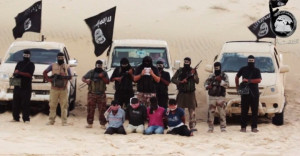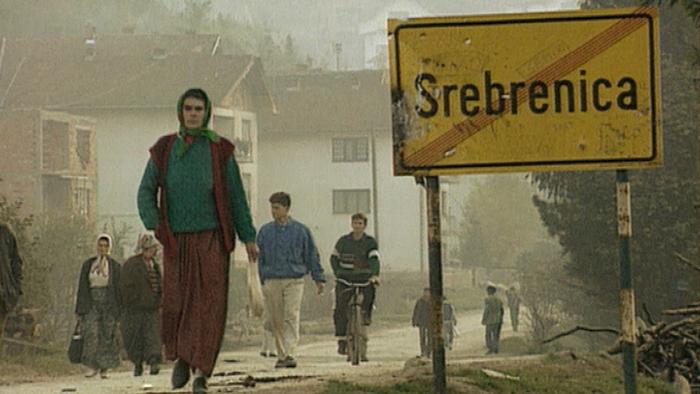July 22, 2015
Over the past several months, the Syria Justice and Accountability Centre’s (SJAC) Documentation Team in Turkey has worked to document detention centers run by the Islamic State of Iraq and al-Sham (ISIS). The Team interviewed four former ISIS detainees and gathered information on ISIS detention conditions and procedures. Although the bases for ISIS detentions appear not to be uniform, ISIS detention practices seem to have developed into standardized procedures. SJAC has summarized and analyzed several of the trends that can be gathered from the interviewees’ experiences and their descriptions of what other detainees endured or reported.
Method of Detention
According to interviewees, ISIS generally detains prisoners collectively. Up to 50 ISIS fighters at a time gather the detainees in large numbers with their eyes blindfolded and their arms tied behind their backs. The interviewees said they were picked up by ISIS fighters in an entourage of 11 to 15 pickup trucks bearing the ISIS logo. Among the former detainees that SJAC interviewed, three identified their arrestors as familiar men from their hometown, some of whom were as close as next door neighbors. After the mass arrests, the ISIS fighters take the detainees to local schools that ISIS has converted into temporary detention centers. Once all the arrest squads gather the detainees in the school, they then move the detainees to isolated locations, such as farmhouses in rural areas, a process which can take several days. If the chosen locations are inhabited, ISIS men forcibly remove the residents to clear the buildings for their detainees. During this time, the detainees receive no communication of the reasons for their arrest.
Upon Arrival to the Detention Centers
The converted farmhouses serve as the interrogation sites. Upon arrival, the detainees are greeted as a group by two men, a Syrian and an Iraqi. The Syrian collects the inmates’ belongings and confiscates any weapons. The Iraqi is responsible for initial interrogations, which are conducted while the detainees are still in a group, to determine the charges and respective fate of each detainee. One interviewee recounted a power struggle in which the Syrian attempted to interrogate the detainees but the Iraqi pushed back against his overreach of authority.
Following the interrogation, the guards separate the detainees into two smaller groups. The first group consists of detainees accused of minor crimes, such as working for non-governmental relief organizations, smoking, and, in some cases, no charge whatsoever. These detainees remain in Syria and are usually set to be released within a short period of time. The second group of detainees are those accused of major crimes, such as membership in the Free Syrian Army (FSA) or relationship with non-ISIS media groups. Those accused of major crimes are transported with caution (to avoid detection and coalition airstrikes) to Iraq for longer-term detention.
Detention Conditions
For each detainee accused of a minor crime, ISIS creates a file with the detainee’s name, surname, occupation, birthdate, and personal photo to keep a record in case the detainee is arrested again in the future. Meanwhile, ISIS guards move the detainees accused of major crimes in a fleet of cars to Iraq, changing drivers periodically along the way. At the end of the journey, the detainees are placed in prisons in the ISIS-controlled town of Al-Qa’im where ISIS maintains numerous hideout facilities to avoid coalition airstrikes. One interviewee described the Iraqi prisons as “caravans” which are regularly moved to avoid discovery. The caravan consists of about three cells eight square meters in size with between 10 to 20 prisoners in each cell. During airstrikes, the detainees are moved to other facilities that have not yet been discovered by the coalition where more prisoners are confined to each cell.
The former detainees accused of minor crimes told SJAC that they had been served two meals a day. Water, however, was scarce and no showers were allowed. ISIS even restricted ablution for prayers to only twice a day. Prisoners accused of major crimes had more limited access to food and water, with only one serving of food a day. One interviewee accused of a major crime informed SJAC that ISIS guards had refused him water when it was time to break the day’s fast during Ramadan even as the guards drank water in front of him. The interviewees also said that in some instances, the shortage of potable water was used as a mechanism for torture.
Torture and Punishment
Following initial group interrogation, detainees are subjected to individual interrogations, which often include torture. Every interviewee mentioned the name Abu Anas, an important ISIS figure who visits prisoners prior to their release. Abu Anas is an Iraqi citizen and the prince of the Khair state which lies between Deir Azzour in Syria and parts of Iraq. According to the interviewees, Abu Anas has a large build, stern posture, and harsh attitude. He asks the detainees about their alleged crimes and supervises their torture, sometimes personally beating any detainee accused of committing a crime he “does not like.” He inflicts the worst punishments on journalists and members of the FSA or Al Nusra Front. Interviewees reported hearing Abu Anas order his men to kill or detain any FSA member they came across, and in the detention centers, sick or wounded FSA members are not allowed treatment until Abu Anas has left the facility.
Torture under ISIS takes many forms. ISIS’s primary torture tactic, according to the interviewees, is the “Akrab Knot” where both arms are twisted until they are dislocated at the shoulder, allowing the guards to tie both arms together in the back by a metal chain. The Akrab Knot is almost always used in conjunction with an additional tactic. Most commonly, after the prisoner’s arms are tied, the guards hang him so that his toes barely touch the ground. The guard then begins beating the detainee until he starts to confess to his alleged crimes. Once the detainee’s confession matches ISIS’s accusations, the prisoner is untied and lowered back to the ground and the ISIS guard continues with the interrogation. The interviewees lose all feeling in their arms even after they are released due to the excruciating pain of torture.
Prisoners accused of minor crimes, like smoking, are rarely tortured but could be exposed to verbal abuse.
The Process for Release
The SJAC interviewees did not recount a standardized release procedure. Most of the interviewees attested that prior to releasing prisoners, an approval from the ISIS Emir in charge of that region has to be received. One interviewee accused of a major crime reported that he had been dropped off on the side of the road in Iraq with no money and had to figure out a way to get home to Syria on his own. One former detainee said he was thrown out of the pickup truck while tied and blindfolded and had to wait until someone came along to untie him.
– – – –
Amidst chaos, ISIS appears to be conducting efficient arrest and detention operations. Detentions are arbitrary in terms of substance because detainees can be detained without reason and are guilty by accusation. However, interviewee descriptions of detention experiences indicate that ISIS has developed systematic procedures that have relatively standardized the detention process itself. Interviewees uniformly reported collective arrest by a large ISIS entourage. Additionally, descriptions of the interrogation process, detention facility locations, and division of roles among ISIS members indicate uniform planning and organization. Even though ISIS is under attack from multiple fronts, its high adaptability is borne out by detention procedures that are responsive to changing battlefield conditions while remaining internally consistent.
For more information and to provide feedback please email SJAC at info@syriaaccountability.org .

